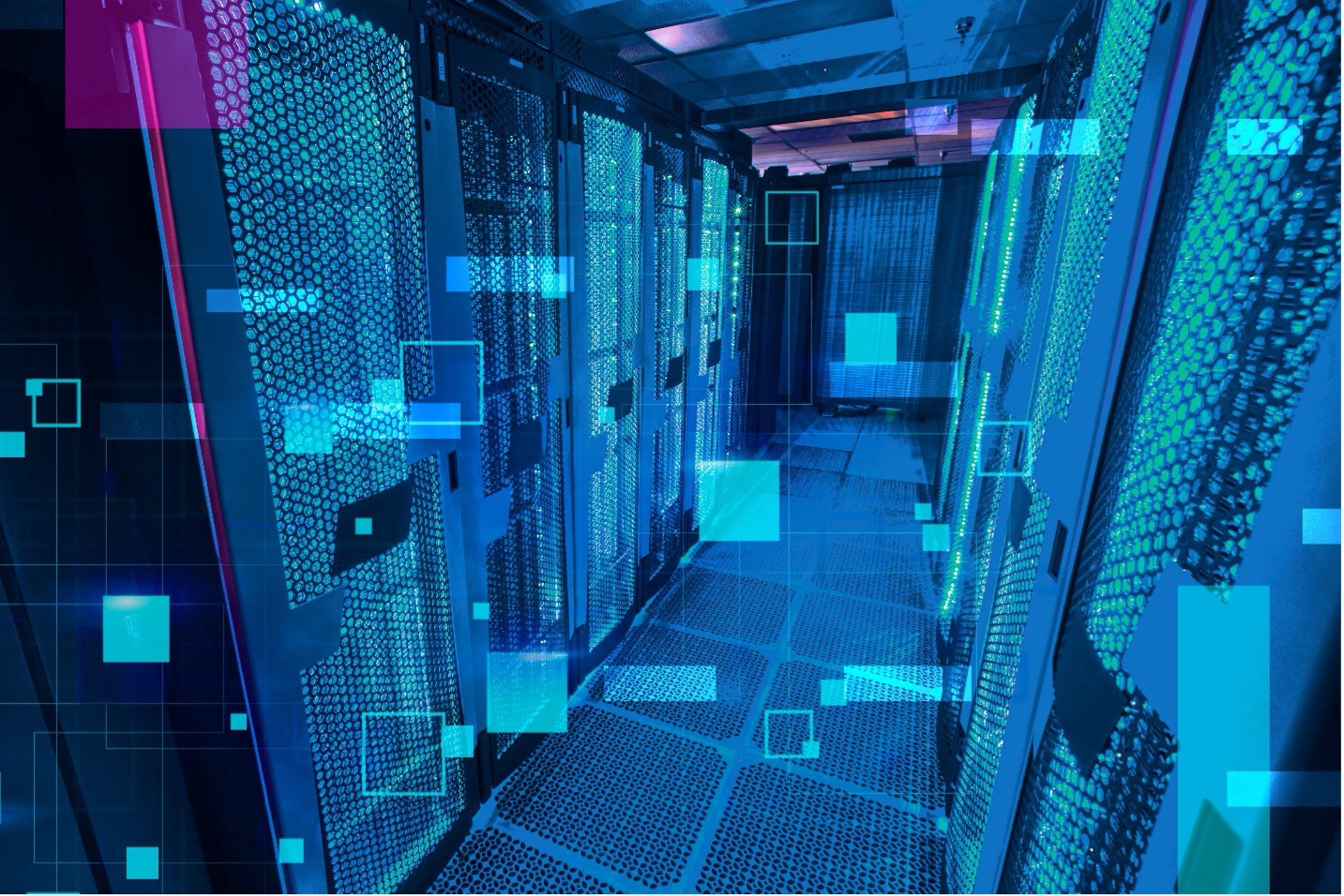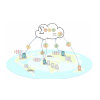Deployment mode: Cloud vs. On-Premises. Which one is better for your business?

Image by rawpixel.com on Freepik
Due to the booming of a high-tech era, companies have undergone significant changes in computing and communication platforms. One of the most crucial steps in adopting AI is to decide which deployment mode is the most suitable one when setting up the IT infrastructure for the business. Therefore, when it comes to choosing between cloud deployment and on-premises deployment, decision makers must put a lot of forethought and be strategical about it.
Unsurprisingly, there are advantages and disadvantages to both means of deployment. This article will help enterprise decides which one is the best option to bring AI one step closer to their business.
What is on-premises and what is cloud computing? Let’s take a glimpse of each available option.
ON-PREMISES
On-premises deployment is when software is located on the hardware on the company’s premises. With on-premises deployment, no outside parties have access to company’s data, software, or hardware, which are all completely under the company’s control. Usually, the software is shielded by the internal firewall of the company’s servers and the company is responsible for maintaining the solution and all its related processes. On-premises software requires enterprises to purchase a license or a copy of the software that they will be hosting.
CLOUD COMPUTING
In contrast to software that is hosted in-house, cloud computing is hosted entirely remotely on another server by a third-party through the Internet. Simply put, cloud computing is a pool of resources that can be accessed online and offers faster innovation, flexible resources, and economies of scale. This allows companies to function on a pay-as-needed basis so they can effectively scale with companies’ needs.
There are five main types of cloud computing available for business: private cloud, public cloud, hybrid cloud, multi-cloud, and high-performance computing (HPC) cloud. Those five types of clouds come along with three main types of cloud computing services: Infrastructure-as-a-Service (IaaS), Platform-as-a-Service (PaaS), and Software-as-a-service (SaaS).
What are the differences?
Private cloud is cloud computing that is dedicated solely to one organization. It is a single-tenant environment and the organization using it does not share resources with other users.
Public cloud is defined as computing services offered by third-party providers over the public internet, making them available to anyone who wants to use or purchase them. Public cloud can be free or sold on-demand, allows customers to pay only per usage for the CPU cycles, storage, or bandwidth they consume.
Hybrid cloud is a mix between on-premises, private cloud, and third-party, public cloud services with orchestration between these platforms. This usually entails a connection from an on-premises data center to a public cloud.
Multi-cloud is a cloud computing paradigm where an organization uses a combination of clouds to distribute applications and services. It can be two or more public clouds, two or more private clouds, or a combination of public, private and edge clouds.
High-performance computing (HPC) cloud is used to solve complex, performance-intensive problems. The economics of product development and research are shifting because of HPC in the cloud since it requires fewer prototypes, speeds up testing, and cuts down on time to market.
ON-PREMISES VS. CLOUD COMPUTING
Now, let’s outline the fundamentals to understand the implications for deciding on cloud vs on-premises computing. When considering which option lines up best with the needs of users, the key requirements are accessibility, performance, especially security along with vendor reputation and user community.
Weighing the merits of cloud offerings, there are some points to be taken into consideration. The basics of cloud computing are:
- Universal access: by taking services outside the firewall, cloud computing services are platform independent; they are accessible across many devices with internet connection. This increases mobility and productivity as it allows staff to collaborate on projects.
- More storage capacity: cloud computing offers unlimited storage as long as companies can afford it. Therefore, companies don’t have to worry about running out of storage.
- Easy and quick set up: when using cloud, all it needs is to be connected to a network (or the internet), registered with a cloud provider, and adjust some simple configurations.
- Automatic updates: with cloud computing, all updates are solely done by the provider.
- Cost-effective: companies only have to pay for what they use. Cloud computing helps companies to save of the hassle of incurring other costs such as maintenance, security, and storage costs.
- Most prominent cloud platforms available for companies are Microsoft, Google, and Amazon.
Yet, such a convenient option also comes with its downsides:
- No full control over data: data can be quickly and easily accessed but some cloud services or applications may not be reliable if there is downtime on the cloud. The downtime can be a result of unexpected circumstances such as outages, maintenance activities or updating periods. Users are subject to the cloud’s terms and conditions.
- Data security concerns: when it comes to data, cloud computing poses a variety of risks that company needs to address as part of their security strategy. Common cloud-related risks are data loss and data leaks, cyberattacks, etc.
Therefore, security is a major selling point of on-premises solutions, as the data is stored entirely in-house. Besides offering a complete control over data, on-premises model is also better with compliance policies that involve data protection, data sharing limits, authorship, etc.
However, when it comes to scalability and cost, on-premises requires additional hardware or software upgrades and more upfront capital which is why some enterprises still hesitate to choose this option.
Key differentiators between the two models boiled down to resource control and infrastructure management. The final decision of whether to choose on-prem or cloud computing can only be decided based on the nature and requirements of enterprise. In reality, larger companies with more upfront capital are more likely to adopt on-prem solution while smaller businesses may prefer the lower budget and less hands-on approach that cloud-based solution offers.
Fortunately, there are even ways to deploy a hybrid of the two deployment modes for a specific use case if a company wishes to implement what feels like “the best of both worlds”.
Gaining deeper insight into the cloud vs. on-premises frameworks reveals lessons that inform the decision-making to make sure the right approach is adopted for an optimum result.
INTRODUCTION TO AI-STACK FOR INFRASTRUCTURE MANAGEMENT
AI-Stack provided by InfinitiesSoft is a flexible software platform that can help enterprise manage AI projects, organize tasks, and especially share GPU resources across team members. With AI-Stack, once companies have decided which model is best for their business, either on-premises and hybrid cloud mode, AI-Stack can come in handy in terms of managing infrastructure and controlling/monitoring resources.
AI-Stack orchestration enables on-premises and hybrid could infrastructure to efficiently utilize GPU and CPU resources via a self-service portal. With AI-Stack, enterprises are also offered various graphical dashboards that will provide real-time monitoring charts of current GPU resource usage, CPU usage, memory usage, disk usage, GPU temperature, etc. Hence, it cultivates resource transparency and avoids abusing resource.
Within the AI-Stack ecosystem service, the platform also provides various AI Frameworks, AI Toolkits, and AI SDKs on the platform for on-demand use. That means it increases the toolsets available to enterprises and assists in the rapid development of AI.
With AI-Stack, everything can be done at the same time. Choose which deployment mode to use for your company, and let AI-Stack handle the rest. Adopt AI-Stack to manage AI projects for better peace of mind.





